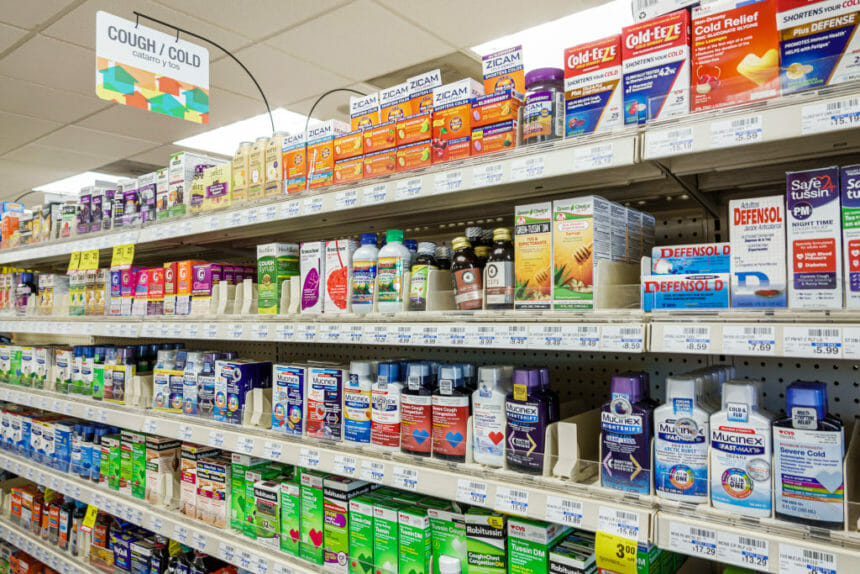Over-the-counter drug advertisers are boosting their investment in ad sales to meet the heightened demand for cold and flu medication amid the particularly severe start to flu season, according to data released this week by MediaRadar.
There’s been a significant jump between OTC ad spending for cold and flu medication over the past year. Advertisers spent nearly $170 million between January and October 2022, compared to just $106 million during the same time period in 2021.
In particular, OTC drug advertisers ended up spending more than $73 million in September and October, with the spending during the latter month increasing 27% month-over-month.
The vast majority, or 96%, of that spending is related to cough and cold OTC drugs while the rest goes toward flu or sore throat OTC drugs.
The jump is related to several factors. The receding COVID-19 pandemic, an intense cold and flu season and macroeconomic pressures are all driving a need for OTC brands to “stand out,” according to Lindell Bennett, chief revenue officer of Cooler Screens, a company known for its in-store digital displays that is also running five campaigns for cold and cough brands.
“Not only are we in a heightened season where advertisers have to be able to get their message across to customers, but we’re also in a heightened season where the value that they bring is integral,” Bennett explained.
This time last year, the U.S. was focused on the spike of the Omicron variant of COVID-19. During that period, there were still some lingering pandemic restrictions like isolating, testing and wearing masks.
However, 2022 brought with it an explosion of in-person work and events, resulting in what is currently shaping up to be one of the worst flu seasons in a decade. The combination of respiratory infections has prompted fear of the emergence of a ‘tripledemic’ involving flu, RSV and COVID-19.
Flu cases and hospitalizations have been so high lately, in fact, that many pharmacies have been seeing shortages of flu medication Tamiflu, though some products have returned to shelves in recent weeks.
“It was a different world 12 months ago versus what we’re seeing now, where in-person events have had a huge spike,” Bennett says. “You’re seeing that in an in-store impact too. There’s a lot more in-store traffic, and there’s a bigger spike in cold and flu supplies specifically.”
Of all the well-known cough and cold drugs, Reckitt Benckiser’s Mucinex saw a 68% increase in year-over-year spending and a 95% increase in month-over-month spending in October. In light of recent infection rates, Mucinex is also investing 32% of spend into digital media like over-the-top (OTT) advertising, social and display.
Bayer and Proctor & Gamble, along with Reckitt Benckiser, stand out as the top spenders in the category, according to the MediaRadar report.
Advertisers are thinking more about getting their message across in retail spaces where consumers may often feel overwhelmed or inundated with options, Bennett says.
“Because of high demand and economic pressures that they’re facing, [advertisers are saying], ‘I need to have my message on point. I need to have the volume and intensity of my message out there. I’ve got to differentiate why people should choose brand X, and particularly private labels.’”
Bennett stresses the need for advertisers to hone in on the right compelling message, then test the message to make sure it works. Finally, he suggests placing the messaging in high-traffic areas in the retail spaces in order to influence consumers at their point of decision.
“Advertisers who are consistently sharing that message – and consistently optimizing their creative to make sure the message is landing with their customers – are the ones who are winning and gaining category share as you go throughout the year,” Bennett says.
As the flu and cold season is expected to get worse throughout the winter, brands have plenty of opportunity to craft their OTC ad efforts. The bottom line is that “every dollar has to count,” Bennett says
“Cold and flu demand is through the roof, in-store traffic is way up and every dollar has super high pressure on it,” Bennett says. “You are in a tight situation where you need to increase your spend, but you also have to be thoughtful about not only the messaging but where you put that spend.”







